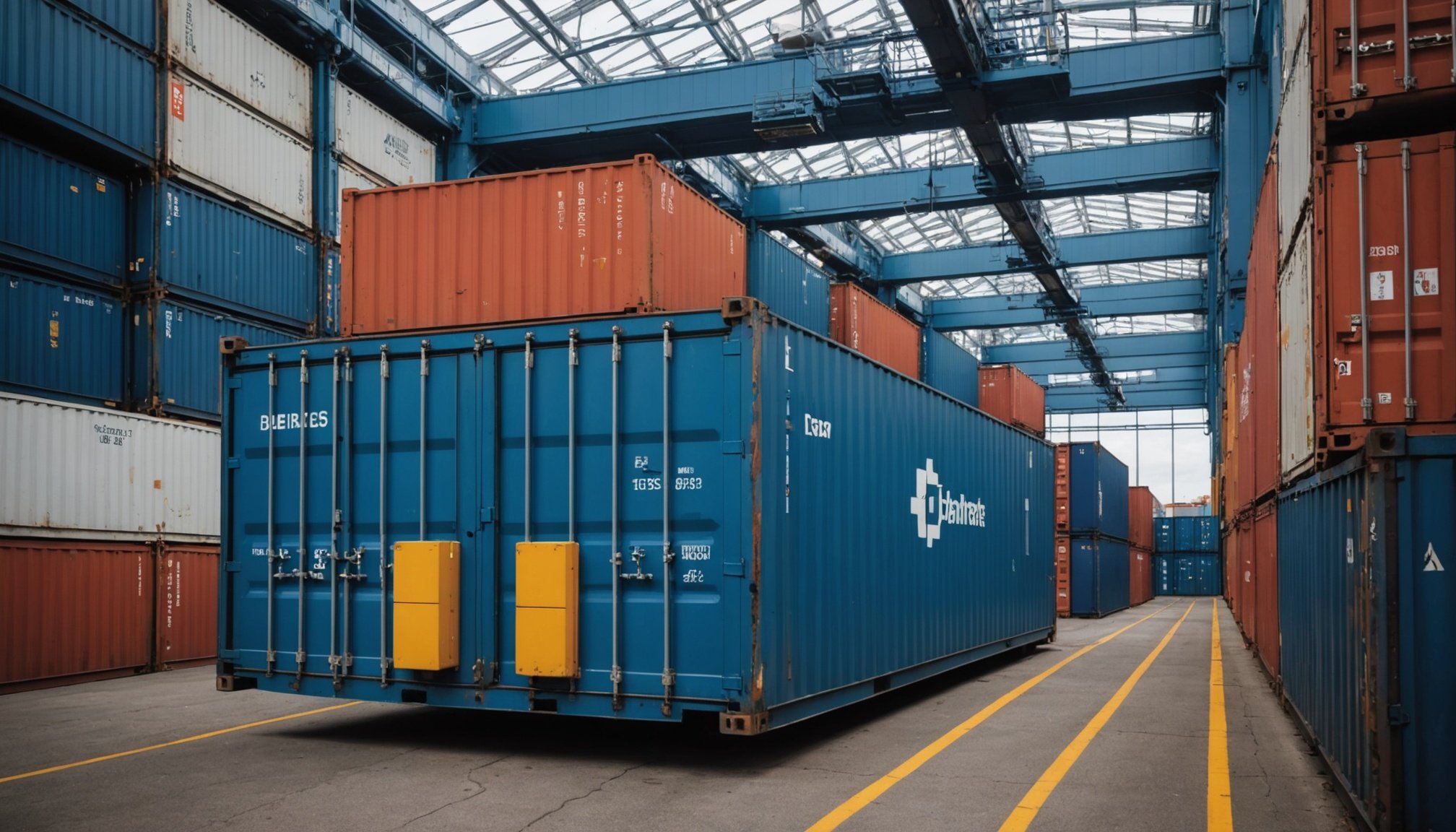Overview of Container Security in Kubernetes
Kubernetes container security is fundamental to safeguarding containerized applications. With distributed systems, the attack surface increases, making it crucial to implement robust security best practices.
Common vulnerabilities in containerized applications include insecure images, exposed secrets, and inadequate network policies. These vulnerabilities often arise from misconfigurations or unpatched software, which can lead to unauthorized access.
Topic to read : Top Proven Techniques to Safeguard Docker Secrets in Your Swarm Environment
Key security concepts in the Kubernetes ecosystem include Namespace Isolation, ensuring that resources are partitioned and isolated. This reduces the risk of interference or attack between different applications. Pod Security Policies are also essential, as they enforce rules governing container behaviour, ensuring they run with minimal privileges.
Furthermore, Network Policies play a critical role in controlling traffic flow between Pods, thus preventing potential breaches. By restricting communication to only necessary paths, you safeguard against lateral movement by attackers.
Additional reading : Essential Tactics to Safeguard Your Jenkins Pipeline Against Frequent Security Vulnerabilities
To achieve optimal Kubernetes container security, it is essential to conduct regular security audits, utilize automated tools for vulnerability scanning, and ensure all components are regularly updated. Engaging in ongoing education and training helps maintain awareness of evolving threats and emerging security best practices.
Implementing Role-Based Access Control (RBAC)
RBAC in Kubernetes is indispensable for efficient access control, ensuring that only authorised users can interact with specific resources within a cluster. To configure it, you must define clear roles and role bindings. Roles specify the set of actions that can be performed on certain resources, while role bindings link these roles to users or groups.
When establishing roles, focus on the principle of least privilege. This entails granting the minimum permissions necessary for users to complete their tasks, reducing the risk of accidental or malicious actions. To efficiently manage user permissions, maintain a structured hierarchy of roles that align with organisational needs, ensuring all users adhere to best practices for security.
Integrating RBAC into your Kubernetes environment helps prevent unauthorised access, ensuring a streamlined mechanism for security enforcement. Regular review and audit of role assignments are crucial, allowing for timely adjustments to address evolving security requirements. By adopting a meticulous approach to RBAC implementation, you enhance the security posture of your Kubernetes setup, minimising potential vulnerabilities and safeguarding your containerized applications from unwarranted access.
Conducting Vulnerability Scanning
Vulnerability scanning is a pivotal component of container image security in Kubernetes. Regularly scanning images helps identify potential vulnerabilities before they can be exploited. This process is integral for maintaining secure containerized applications, given the dynamic and evolving nature of threats.
In Kubernetes, various tools are available for vulnerability assessment. These include open-source options like Clair and Trivy, which thoroughly scan container images to detect known vulnerabilities. By integrating these tools into your security strategy, you ensure continuous monitoring and remediation of vulnerabilities.
Integrating scanning into CI/CD pipelines is crucial for achieving continuous security. By embedding automatic scans within the pipeline, vulnerabilities can be detected and addressed before deployment, thereby reducing the risk of exposure in production environments. This proactive approach ensures security is maintained throughout the development lifecycle.
Effective vulnerability scanning not only detects potential threats but also strengthens the overall container image security posture. By staying alert and responsive to identified risks, you safeguard your Kubernetes environment from emerging threats and enhance trust in your containerized applications.
Monitoring and Logging Strategies
Implementing robust Kubernetes monitoring and log management strategies is crucial for maintaining security and ensuring swift incident response. Monitoring tools like Prometheus and Grafana play vital roles in tracking application performance and identifying anomalies that may signal potential threats. They provide real-time metrics that are essential for proactive management of containerized applications.
Setting up effective logging practices involves aggregating and analysing logs through tools such as Elasticsearch, Fluentd, and Kibana (EFK stack). This setup facilitates comprehensive security auditing by providing detailed records of events and activities within the cluster. Well-maintained logs offer insights into security incidents, enabling timely detection and resolution.
Using logs for security audits introduces a systematic approach to evaluating security best practices adherence and uncovering unauthorized access attempts. They enable detailed tracking of user actions, providing valuable data for forensic analysis post-incident. By prioritizing comprehensive log management, you bolster the overall security posture of your Kubernetes environment and enhance your ability to respond effectively to threats as they arise.
Network Policies for Enhanced Security
In Kubernetes, network policies are essential for safeguarding microservices security. They define how Pods within a cluster communicate, enabling administrators to enforce controlled data flow and prevent unauthorized access. By practising effective network segmentation, you can limit potential attack surfaces, minimizing the risk of breaches.
To create and manage network policies, administrators should first understand application communication needs. This involves mapping out necessary inter-pod communications and designing policies that allow only required connections. Network policies can be configured using tools like Kubernetes-native NetworkPolicy resources, which specify how workloads communicate with each other and with external endpoints.
Learning from successful implementations, a case study of a healthcare application shows how network segmentation can mitigate risk. By limiting communication between sensitive data storage pods and other services, the organisation reduced vulnerability to data exposure.
For robust security, it’s crucial to adopt network policies tailored to the specific operational context and to audit and update these policies regularly. Through proper network segmentation, you establish a resilient security framework that wards off potential threats while enabling necessary connectivity.
Best Practices for Securing Kubernetes Deployments
Ensuring Kubernetes security is an ongoing challenge that requires adherence to established Kubernetes security best practices. These practices help secure deployments against potential threats and ensure compliance with industry standards.
It is essential to regularly update Kubernetes alongside its components. This reduces vulnerabilities by fixing known security issues. Timely updates close the window of opportunity for attackers exploiting outdated versions.
Implementing effective security policies for the container runtime mitigates risks during application execution. By configuring runtime policies, you can define which capabilities are permitted, thereby restricting potentially dangerous actions and enhancing overall deployment security.
Continuous compliance checks and assessments are crucial to maintain security. These checks verify alignment with regulations and organisational policies, promptly identifying non-compliance areas. Automated tools can facilitate these audits, providing regular reports and highlighting necessary adjustments.
Incorporating these best practices strengthens Kubernetes deployment security, protecting the application environment against diverse threats. By staying proactive in updating systems, enforcing security policies, and conducting regular assessments, you build a robust security framework suitable for safeguarding containerized applications.
Incident Response Planning
Planning a robust incident response strategy is essential for safeguarding Kubernetes environments against potential security breaches. Having a comprehensive plan ensures that your organisation can quickly identify, contain, and resolve incidents. This reduces downtime and limits the impact on critical business operations.
An effective incident response plan in Kubernetes involves several key response strategies. Initially, you must define clear roles and responsibilities for response teams to ensure a coordinated approach. Establish a communication plan to ensure timely information sharing among stakeholders. Additionally, implement monitoring systems to detect anomalies and threats early.
Real-world examples highlight the importance of a proactive incident response approach. For instance, in one case, a company faced a significant data breach due to configuration errors but successfully mitigated damage through rapid detection and response. Another organisation utilised automated tools to trace the intrusion source, exemplifying the role of technology in effective incident management.
Regularly reviewing and updating your incident response plan is crucial for addressing evolving threats. By prioritising these strategies, you strengthen your Kubernetes security posture and enhance your capability to handle incidents efficiently and effectively.
Conclusion on Protecting Containerized Applications
In the pursuit of effective Kubernetes security strategies, protecting containerized applications demands a comprehensive approach. One cannot overemphasize the role of consistent education and training in staying informed about emerging threats. These educational efforts ensure that all stakeholders remain vigilant and knowledgeable, minimizing risks related to outdated practices.
Observed best practices include deploying network segmentation that limits unauthorized access, routine vulnerability scanning, and exploiting network policies tailored to organizational needs to shield against breaches. Incorporating these techniques establishes a proactive security framework, reducing the likelihood of exploits within a containerized environment.
Implementing a holistic security approach necessitates integrating multiple layers of application protection. This involves stitching together strategies like RBAC, effective monitoring, and incident response planning to fortify defences. By embedding security into every aspect of Kubernetes operations, organizations can ensure a robust and resilient posture against potential compromises.
Encouragement lies in acknowledging the evolving nature of threats; hence, commitment to these strategies is not only prudent but essential for safeguarding modern infrastructures. Remaining proactive and adaptable fortifies the security of containerized applications in the intricate Kubernetes landscape.











